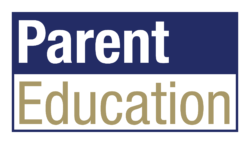A classical, liberal arts education includes integrated instruction in many diverse disciplines and curricular programs which, taken together, constitute a comprehensive and holistic view of human knowledge and experience. Below you will find information on some of our core curricular programs.
Singapore Math
We now have a whole page devoted to our Singapore Math curriculum and resources related to it, including how you can help your child at home. Visit greatheartsirving.org/singaporemath.
Spalding Phonics
Great Hearts Lower Schools teach students to read, write, and spell using a program called Spalding. Spalding is a phonics program that uses a meticulously-detailed and multisensory approach to help students decode unfamiliar words and understand how the English language works. For more on Spalding, visit spalding.org.
Parents of Lower School scholars can support their children’s mastery of the phonograms necessary for English reading, spelling, and writing by purchasing a set of these Spalding Phonogram Cards to practice at home.
Spalding has created a free web app for practicing phonograms at home.
Free Spalding Phonogram Practice App
Spalding Phonogram Web App Instructions
There is also a Spalding Phonograms App for iPhone available for purchase to facilitate phonogram practice at home.
Spalding Phonogram Videos
Great Hearts has made videos featuring the sounds and manuscript formation of all 70 Spalding phonograms that you can use at home with your child for practice.
You can also click on the links below to play the video for one particular phonogram:
1(a) 2(c) 3(d) 4(f) 5(g) 6(o) 7(s) 8(qu) 9(b) 10(e) 11(h) 12(i) 13(j) 14(k) 15(l) 16(m) 17(n) 18(p) 19(r) 20(t) 21(u) 22(v) 23(w) 24(x) 25(y) 26(z) 27(sh) 28(ee) 29(th) 30(ow) 31(ou) 32(oo) 33(ch) 34(ar) 35(ay) 36(ai) 37(oy) 38(oi) 39(er) 40(ir) 41(ur) 42(wor) 43(ear) 44(ng) 45(ea) 46(aw) 47(au) 48(or) 49(ck) 50(wh) 51(ed) 52(ew) 53(ui) 54(oa) 55(gu) 56(ph) 57(ough) 58(oe) 59(ey) 60(igh) 61(kn) 62(gn) 63(wr) 64(ie) 65(dge) 66(ei) 67(eigh) 68(ti) 69(si) 70(ci)
Core Knowledge
The starting place for Great Hearts’ Lower School History, Science, Music, and Visual Art curricula is the K-8th Core Knowledge Sequence. Based on the work of E.D. Hirsch, the Core Knowledge Foundation (which is not the same thing as Common Core) seeks to ensure all students graduate as culturally-literate citizens, having encountered all the topics a well-educated person needs to know something about. To ensure our instruction is as rich, rigorous, and classical as possible, Great Hearts supplements the Core Knowledge Sequence with selections from other texts such as The Story of the World, the Famous Men series, and more.
Grammar and Sentence Diagramming
Grammar is one of three arts or disciplines that in ancient times were grouped together as part of the trivium, which are the three arts having to do with language. The term trivium didn’t appear until the Middle Ages, but Western Civilization’s knowledge of the fundamental importance of the three arts of grammar, logic, and rhetoric goes back all the way to Ancient Greece.
But why teach grammar? Isn’t it a bit old-fashioned? At Great Hearts Irving, we believe that, just as there are objective standards of beauty, there are objective standards for using language—humankind’s most powerful tool. Some ways of using language are better than others. Grammar is nothing less than the art of using language well; that is, in accordance with the Good. What is more, there is increasing scientific evidence in support of a proposition that the ancients knew long ago, namely, that language and thought are intimately connected with one another. By bringing order to their use of language, grammar teaches children how to order their mind.
We love grammar, and we love teaching grammar by means of diagramming sentences. Sentence diagramming is to grammar what number bonds and bar models are to math; they allow us to picture with our eyes the order inherent in the sentence, showing us a visual representation of the words, phrases, and clauses in the sentence, the functions they are performing, and their relationships with one another.
If you’d like to learn more about sentence diagramming to help your child with his/her Grammar homework (or maybe your family just loves sentence diagramming as much as we do and you’re looking for some extra practice), here are some resources we recommend:
- The Diagramming Dictionary by Jessica Otto, Susan Wise Bauer, and Patty Rebne
- How to Diagram Any Sentence by Susan Wise Bauer, Jessica Otto, and Patty Rebne
- Grammar for the Well-Trained Mind by Susan Wise Bauer, et al.
- Drawing Sentences by Eugene R. Moutoux
- Diagramming Step by Step by Eugene R. Moutoux
- Rex Barks: Diagramming Sentences Made Easy by Phyllis Davenport
- Sister Bernadette’s Barking Dog by Kitty Burns Florey
- Grammar by Diagram by Cindy L. Vitto (2nd Edition)
- Grammar by Diagram Workbook by Cindy L. Vitto (2nd Edition)
- Grammar by Diagram by Cindy L. Vitto (3rd Edition)
- Grammar by Diagram Workbook by Cindy L. Vitto (3rd Edition)
Latin
We are proud that all Lower School students at Great Hearts Irving study Latin—even our very youngest. We are also proud to be partnering with the University of Dallas and Dr. Laura Eidt in piloting Latin through Stories, all-new Latin curriculum designed specifically for young children. We know that for many parents, helping their children practice their Latin words and phrases at home, it is helpful to have a better understanding of how Latin words are pronounced. To that end, we have worked with Dr. Eidt to produce a Latin pronunciation guide which will be of assistance to you.
Please note, at school we use the “Classical Pronunciation.”
AN INTRODUCTION TO LATIN PRONUNCIATION
For more on the reasons we teach Latin at Great Hearts Irving, we encourage you to visit greatheartsirving.org/whylatin.
For questions about Lower School curriculum and instruction, please reach out to Headmaster Charles Brogan.
